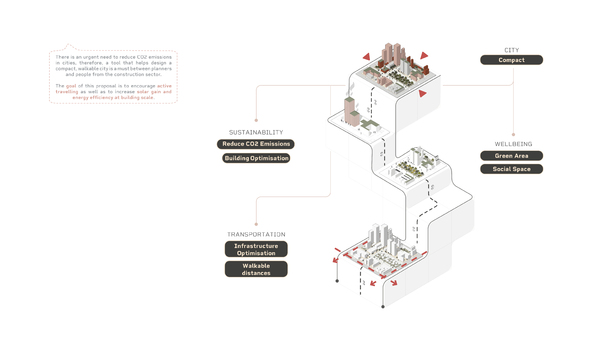[This project was completed in a group with Laura Lapadat and Cristian Dubina]
This project looks at the development of sustainable future cities using computational thinking and urban theory. As a consultant for the Northern Gateway development, we are proposing a tool that will help people from the construction industry to develop compact sustainable cities in a quicker, easier and more efficient way.
Given the climate emergency and the rising risk of warming urban environments, we want to bring back the awareness towards the complexity of the urban form. Non-active modes of transport and private car use in the urban environment contribute to over 60% of the total carbon emissions, posing a threat to both economic development and human wellbeing. There is a strong co-dependence between urban form and modes of transportation which highly impacts carbon emissions. Addressing the shape of the cities and urban mobility is key in moving towards sustainability and increased efficiency.
As a result, we designed a tool that would allow people to design their own compact and sustainable neighbourhood based on a set of rules that will affect the infrastructure, density, distribution of amenities, green area, accessibility and proximity. The distribution model will work on the premise that the development of the area will grow organically, with the size of the population increasing, new facilities and amenities will start emerging as well. To augment the performance of the Northern Gateway neighbourhood, individual buildings within the proposed development will also be optimized.
The end goal was to create a tool that will prioritise active travelling, green areas, public spaces and last but not least smart infrastructure to develop a neighbourhood that is well connected to its surroundings.


